Below, left, the first was built in 1736-37 at Wilton House in Wiltshire on the edge of Salisbury. Below, right, second was built the next year, 1738, at Stowe in Buckinghamshire. Please be sure to click on the small photos for complete versions.
Below, left, a Marble bridge from Russia. When we visited St. Petersburg years ago, we toured the Catherine Palace in the countryside, but when I asked the guide if we could see the Palladian Bridge in the gardens, she laughed, explaining that it was far away and inaccessible to us. So I have to content myself by knowing I was in the neighborhood and looking at pictures from the web such as the one below, the Russian Marble Bridge as it appears on Wikipedia. One might, I suspect, say there are five Palladian Bridges in the world.
Below left, the river at Wilton House, Wiltshire; right, looking through the columns at the park.
Below, left, the Palladian Bridge at Stowe Gardens from a distance. The Stowe version is wider and without step stairs to allow carriages touring the grounds to pass through the bridge.
Below, left, Palladio's Church of Giorgio San Maggiore in Venice; right, Villa Barbaro, in Treviso, Veneto, both by Palladio.
Below two examples of Palladian style in England. Left, the Mansion House, London, official residence of the Mayor of London, built by George Dance in the 1740's. Right, South facade of Stowe House, Buckinghamshire, designed and re-designed by numerous architects, but now appearing primarily as created by Robert Adam (1728-92).
Based on ancient Greek and Roman sources, the principle features of Palladian architecture are symmetry, proportion, balance, and grandeur-- with columns, colonnades, arches, pediments, porticos, and other classical elements. All reflected the sober values of republicanism epitomized in ancient Rome.
Below left, La Rotonda, Vincenza, begun by Andrea Palladio in 1567; right, Chiswick House, 1729, designed by Richard Boyle, 3rd Earl of Burlington (1694-1753), near London, built after Burlington's study of Italian architecture with his mentor William Kent (1685-1748).
Below, Canaletto's painting Capriccio with Design for Palladio's Rialto Bridge is dated 1742. Text in the Royal Collection Trust says, "Palladio published his design for the Rialto Bridge in 1570 with the words: 'Most beautiful in my judgement is the design of the bridge which follows, and very well suited to the site … in the middle of a city, … one of the greatest and most noble in Italy … there is an enormous amount of trade … and the bridge came to be exactly … where the merchants gathered to do business.'" This design was not chosen but lives on in the Palladian Bridges now existing.

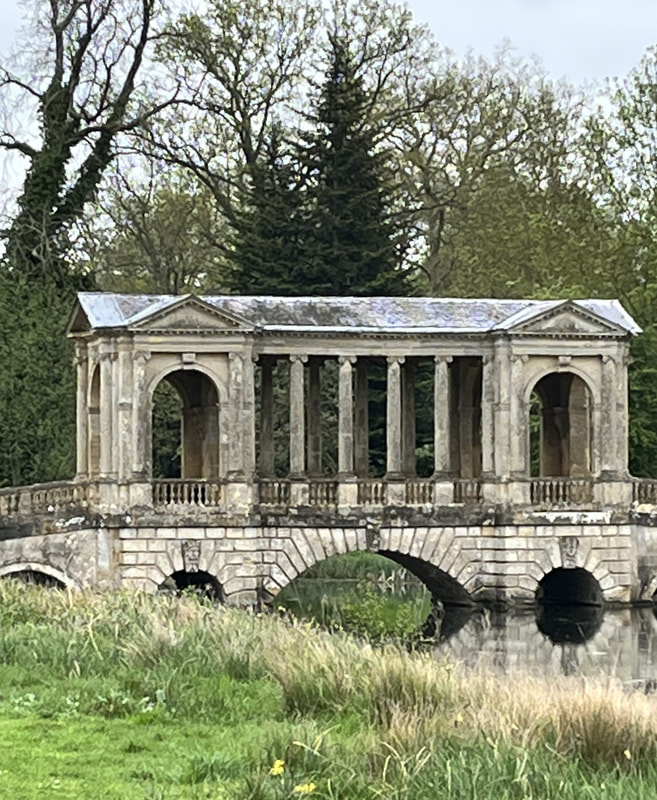


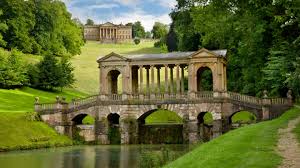

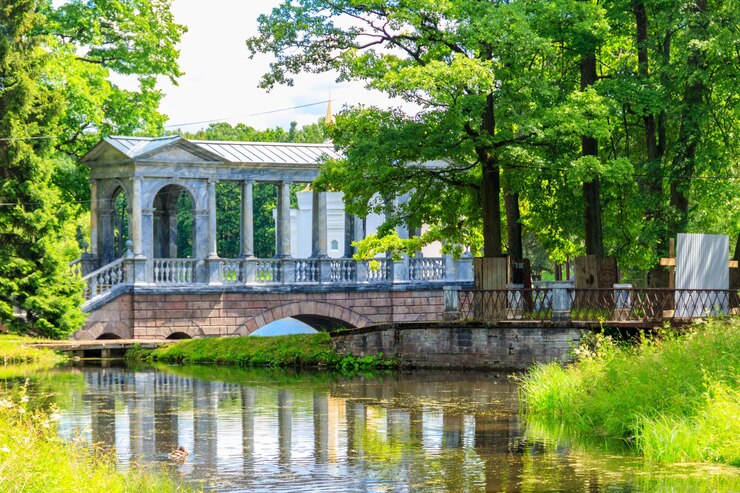
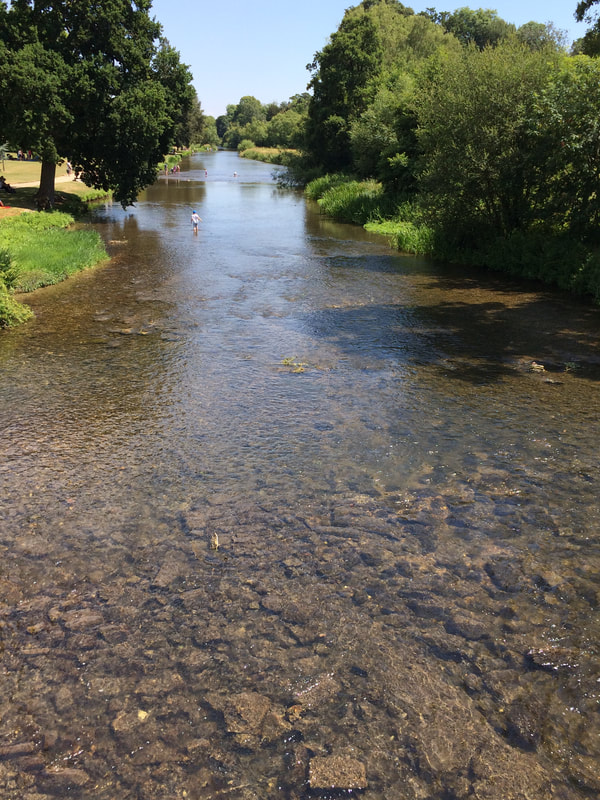



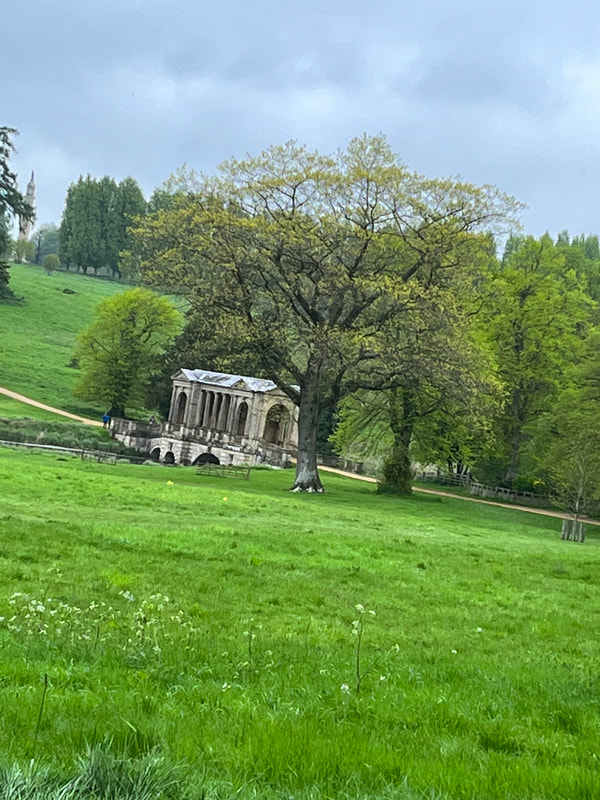


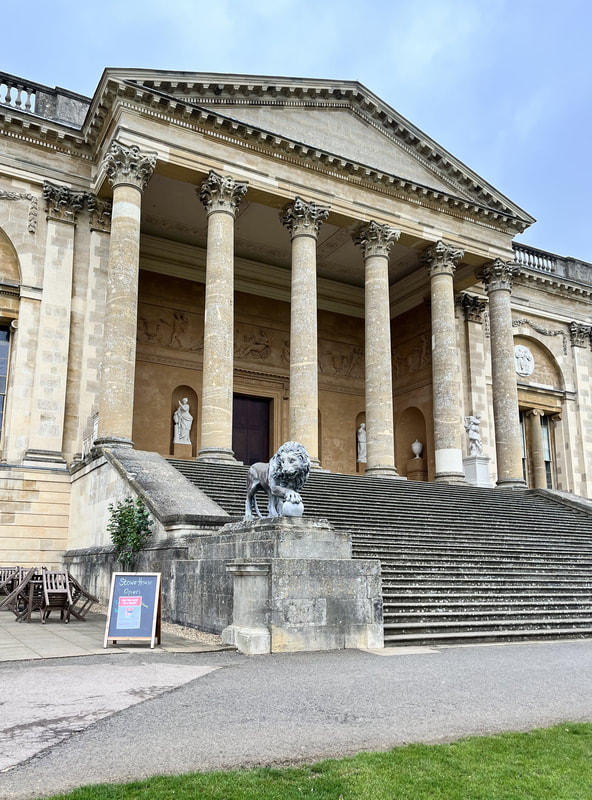
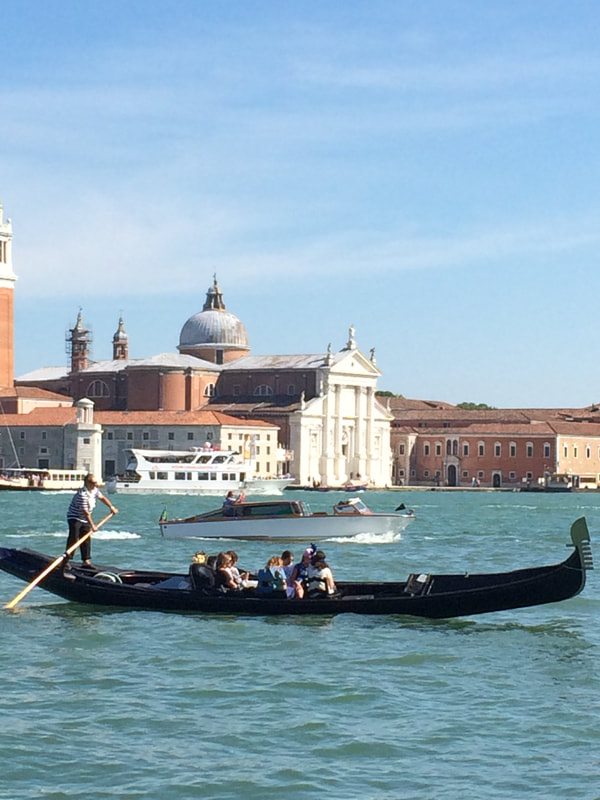

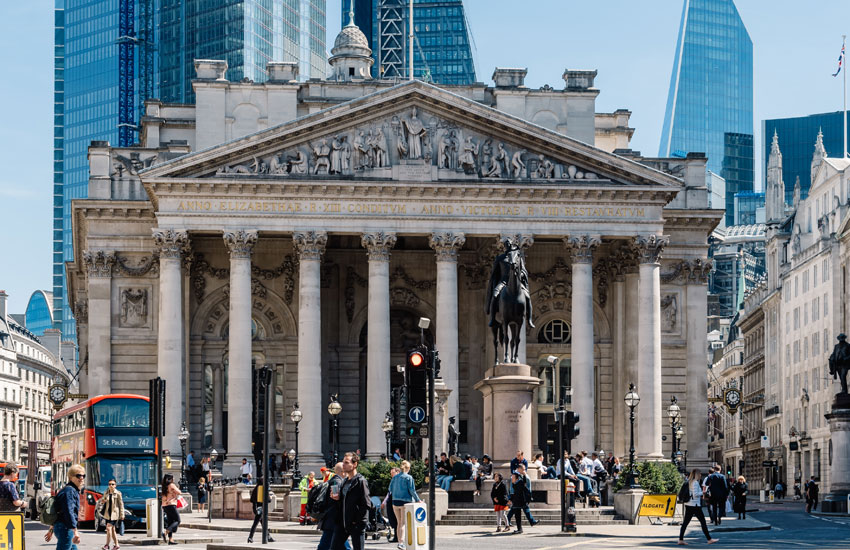




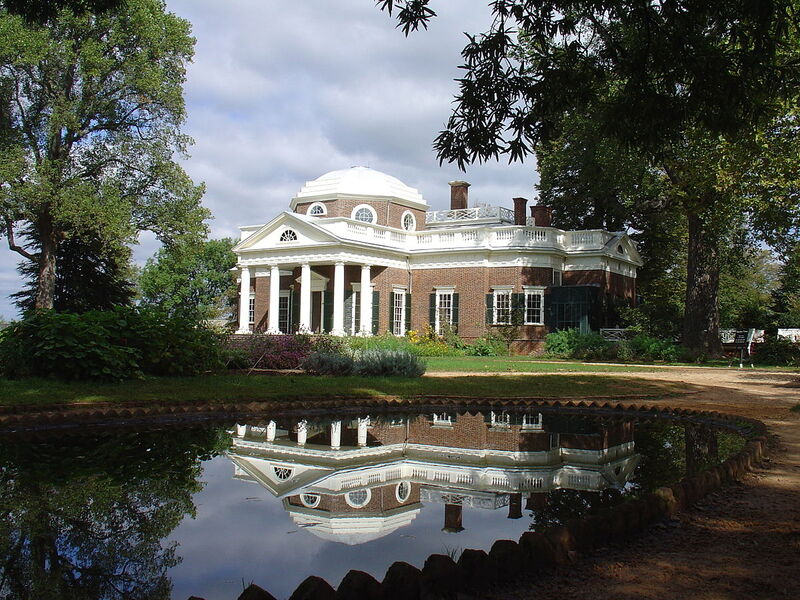
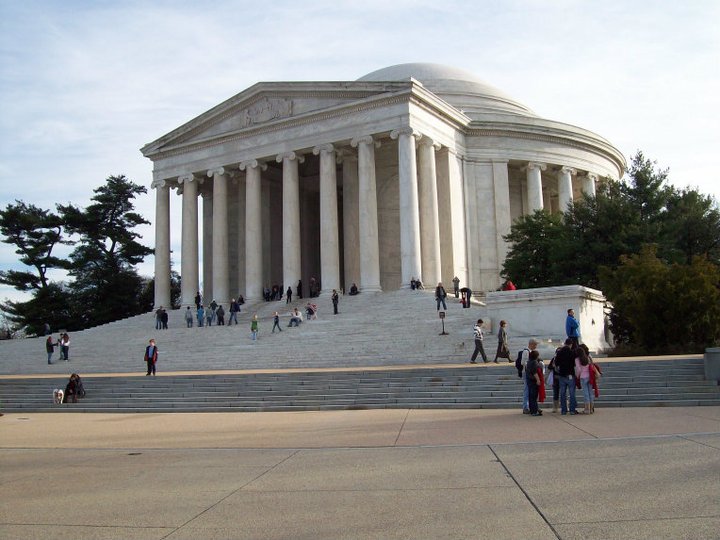
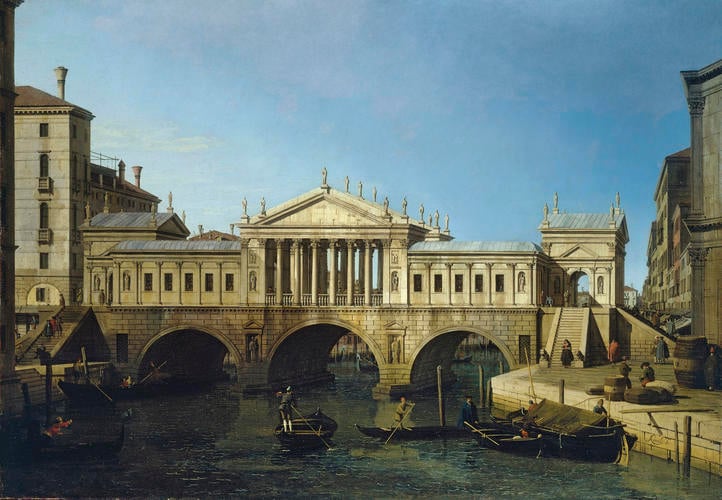
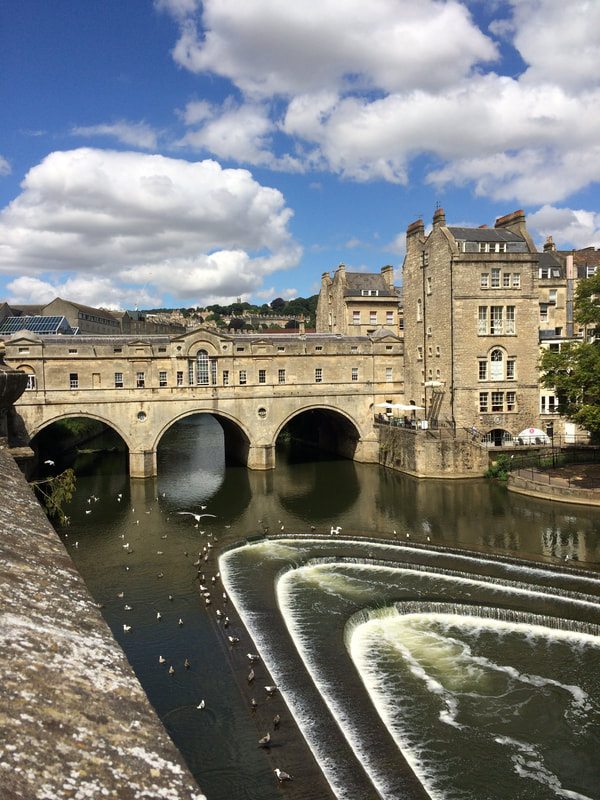
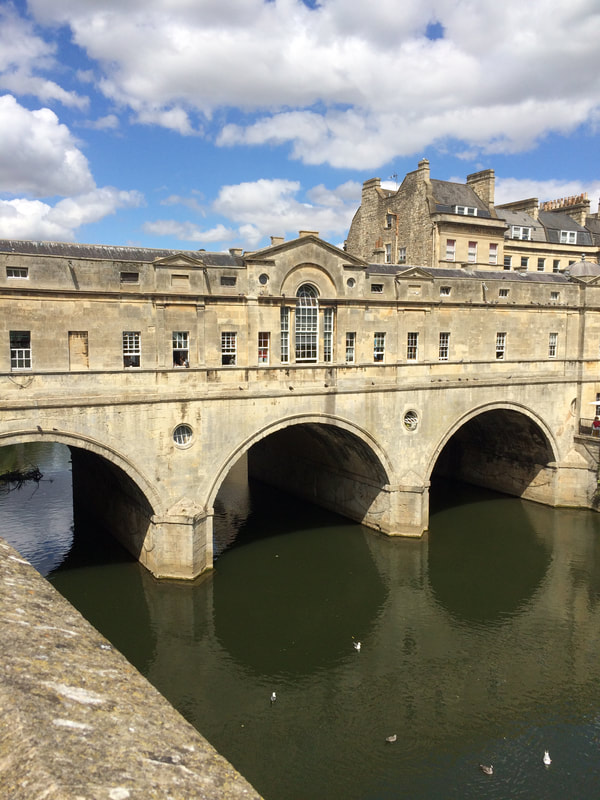
 RSS Feed
RSS Feed